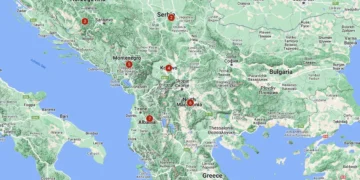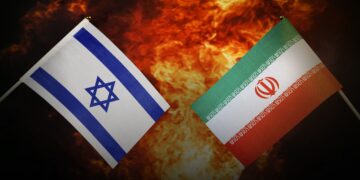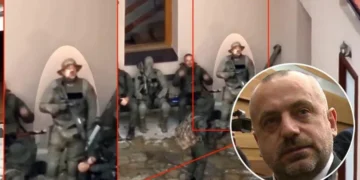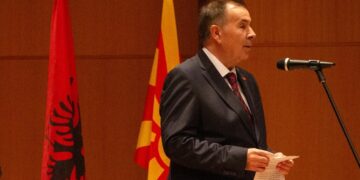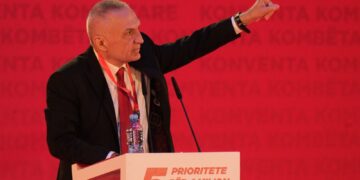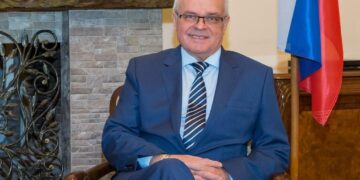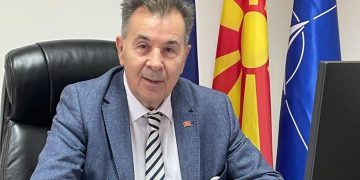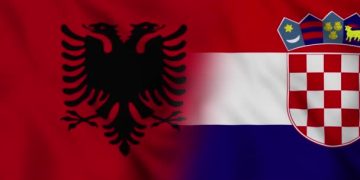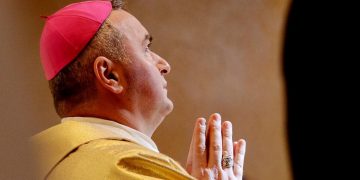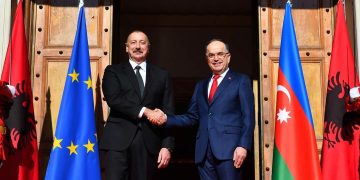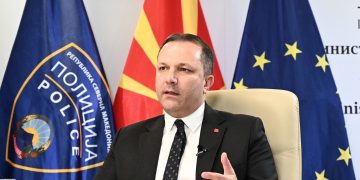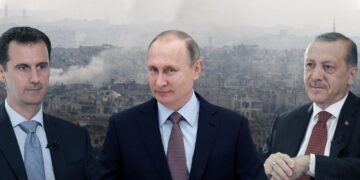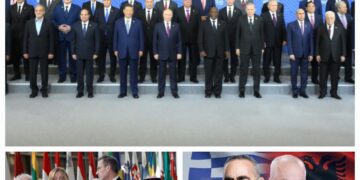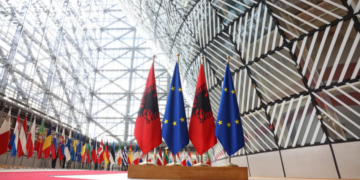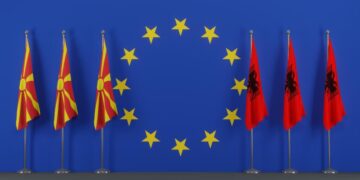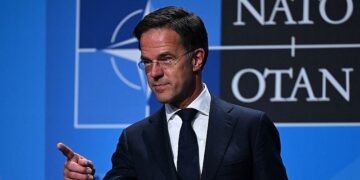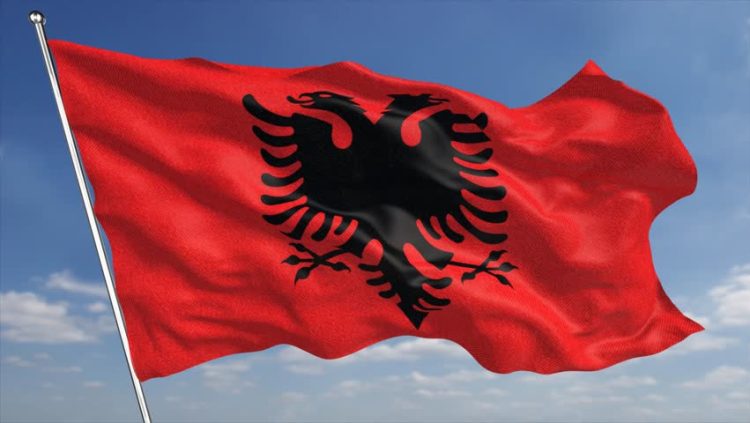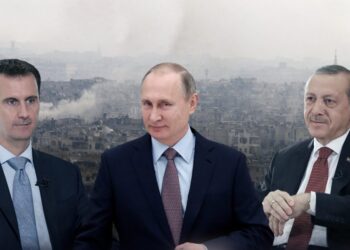An Iconographical Investigation on Social Media Material
By Fabio Bego
Far right groups with fascist-like ideologies and aesthetics are not rare in the Balkans. I am not referring to parties with nationalist and/or irredentist programs, which are quite standard in the Balkan political scene, but rather to movements that specifically identify with or make use of fascist and national-socialist symbols. Golden Dawn (Chrisi Avgi) in Greece is probably the most notable example of a Balkan far right organization that has openly made use of Nazi symbols and gestures. Other less successful political entities such as Serbian Action (Srbska Akcija), the Bulgarian National Union (Bālgarski Nacionalen Sājuz), the Croatian Party of Rights (Hrvatska Stranka Prava) and the New Right (Noua Dreaptā) in Romania have endorsed elements of fascist and national-socialist ideology. In the Albanian political scene, which is fragmented between Albania, Kosovo and Northern Macedonia, there are no organizations with fascist or Nazi heritage. However, the general rise of the far right that characterises the European continent could also concern Albania.
The Political Scene
I decided to focus on the question of whether Albanians liked Fascism when I came across the short documentary “How Mussolini Built the Albanian Road System” which was broadcasted by the local ABC News in 2019. In December 2019 the documentary was made available on YouTube. The film starts by showing images from an Italian propagandistic documentary of the 1930s which uses a triumphalist tone to depict the Italian contribution to the infrastructural development of Tirana. The voice over states that by highlighting the progress that fascist Italy had brought to Tirana, the Italian documentary was not lying. After a short review of the Italian investments in Albania during the interwar period (which started in 1925 with the foundation of the Society for Albanian Development [SVEA]), documentary comes to the conclusion that Albanians should be grateful to Italians because they built roads and buildings that Albanians enjoyed for several decades after the war.
In order to have a glimpse of the way in which Albanians perceive fascism it is interesting to look through YouTube users’ commentaries to the documentary “How Mussolini Built the Albanian Road System”. Several users claimed that Italy dedicated resources to the Albanian infrastructure for her sole interests and that she intended to colonize and assimilate Albanians. However, there are many comments that clearly support Italy’s presence in Albania. One commentator stated that if Italy had kept Albania for the fifty years of communist rule the country would have been much more developed. Another user states that Albanians were still using the infrastructure built by fascist Italy. Some comments praise Italy because her and Germany’s plan was to create ethnic Albania. Other users show support not simply to the benefits that fascism brought to Albania but rather to its ideology. A comment states that “(…) Mussolini was a great person”. Another writes “long live Mussolini and Hitler!!! Death to the communists and their allies that fought against Fascism!!!”. A user named “SS Skanderbeg” – the infamous SS division that Germans instituted in Kosovo in 1944 – shows his allegiance to the Albanian collaborationist regime by entering the flags of Italy, Albania and Germany conjoint to each other by the symbol “+”.
The authors of the documentary did not intend to praise Mussolini as much as they wanted to criticize the Albanian government. In the last four years the Socialist Party-led governments have undertaken a radical restyling of the centre of Tirana and some buildings that were built with Italian money and expertise have been demolished or are scheduled to be so. On June 2016, the “Qemal Stafa” stadium which was projected by Italian architect Gherardo Bosio in the late 1930s, was demolished and a new stadium was built on the same site. In the beginning of 2018, the government declared that the building that hosted the National Theatre which was projected by Giulio Berté, was going to be demolished in order to make space for a new theatre designed by Danish architect BjarkeIngels.
The discussion between supporters and detractors of the government has been characterised by populist speeches that have made constant reference to the alleged “fascist” heritage of the Tirana centre. On August 31, 2014 Gazeta Dita praised the effort of the government that was working to give back the (currently named) “Nënë Tereza” square its original identity, as it was conceived by “fascist” architect Gherardo Bosio. This article shows that until August 2014, the alleged “fascist” character of some buildings was not considered in negative terms. The attitude of the government toward the heritage of the interwar period changed in the later period. In the beginning of 2018, the Mayor of Tirana ErjonVeliaj claimed in the TV show “Opinion” that the building of the National Theatre was part of the fascist heritage and for this reason as well as for its structural fragility it deserved to be demolished. Veliaj was contradicted by the other guests of the show, including the host Blendi Fevziu who claimed that if it were not for fascist Italy there would have been no Tirana at all. The presenter intended to say that it is necessary to distinguish between the consequences of fascist occupation of Albania and the contribution that fascist Italy’s architects have brought to Tirana. The news about the possible demolition of the building generated apprehension among Italian journalists. Exit.al (February 19, 2018) affirmed that the Albanian government was targeting these monuments in order to delete the tracks of the Italian past of the country. An article on ilfattoquotidiano.it (July 15, 2018) commented the events by citing Indro Montanelli’s controversial work Albania una e mille in which the author states that Tirana is a city without a past. To some Italians the presence of “fascist” buildings generates a sentiment of national grandeur that serves to instil a sense of self-confidence vis-à-vis Albanians and Albania. The National Theatre affair is currently in a stalemate and its future is unknown.
The majority of Albanians who live in Tirana do not question the kind of “heritage” that the city buildings represent. In 1991 the mob brought down the statue of former dictator Enver Hoxha and threw stones to public buildings. However, such acts were determined by peoples’ dissent against the symbols of a political system that was still in charge and that they perceived as the direct cause of their political and economic problems. More recently, Albanians have only questioned the heritage of the urban environment when they were pushed to do so by political parties. In 2010 the Democratic Party-led government projected to demolish the pyramid-shaped building at the centre of Tirana. In that occasion the decision to bring down the edifice was based on the fact that it was built to honour the dictator Enver Hoxha. The Socialist Party – which was at the opposition – organized public protests and the demolition was not carried through. The story is now repeating itself but with inverted roles. The debate concerning the demolition of the National Theatre building shows that the actual government led by the Socialist Party has elaborated the discourse of the “fascist” heritage of such building to increase popular support. The same process might have triggered the opinions that characterised the majority of comments written below the documentary “How Mussolini Built the Albanian Road System”. Several users probably praised the works of fascist Italy in Albania because they were influenced by the documentary’s anti-government nuances. However, few comments seem to have been written by persons that sympathise with national-socialist and fascist ideologies. It is not possible to certify the authenticity of the affirmations made on YouTube, but the strong anti-communist sentiment that pervades the opinions of many persons, the spread of subcultures, and the myth of the Great Albania (which however enjoys very limited popularity in Albania), might push the followers of the local rightwing to identify with the political heritage of the continental far right.
The Ultras Scene
In the last two decades, the ultras subculture is becoming particularly popular in Albania and in the other Balkan countries where Albanians live. The iconographical investigation of some Facebook content shows that at least a part of the ultras makes conscious use of fascist and national-socialist symbols. KF Tirana or “Tirona” (as it is pronounced in the local dialect) has one of the most active fan community in the Albanian-speaking Balkans. The major Tironatifo groups are the “Tirona Fanatics” which was established in 2006 and the “Capital Crew” which was more recently created. All Tirona ultras groups are fierce anti-communists. In analogy to other far right organizations in Europe, Tirona ultras propagate revisionist history by denying that the Albanian capital was freed by the communists on November 17, 1944. Instead they claim that the true occupation started on that date. The anti-communist attitude is presented as an original character of any Tirona fan since Selman Stermasi, who was one of the leading figures of the club during the interwar period, resigned in 1946 after that the communist regime changed the name of the club from SK Tirana to “17 Nëntori”. The Tirona ultras’ aversion to communism emerges especially when their team plays against Partizani. FK Partizani was founded in 1946 and was originally the sporting club of the Albanian army. Tirona ultras have exposed banners with drawings of partisans being executed. In 2014 current vice prime minister ErjonBraçe claimed that Tirona fans were fascists because they used anti-communist slogans and exposed a banner addressed to Partizani fans in which it was written “for you we open Auschwitz again.” While many Albanians condemned the attitude of the Tirona supporters, on the comments sections of the Albanian online newspapers, some readers affirmed that Germans have always been allies of Albania and that the abovementioned SS Division Skanderbeg fought for ethnic Albania. Erjon Braçe continues to expose Tirona fans for their alleged fascism and has consequently become one of their major subjects of mockery.
The Facebook pages of the Tirona ultras have never made any written reference to fascism. However, in analogy to other European ultras groups, they have adopted symbols and attitudes that recall the fascist and national-socialist ideology. Well-known slogans in use by continental far right groups such as “better dead than red” and “good night left side” often appear in the stadiums and on the Facebook accounts. The “Capital Crew” has recently posted an artistic image of two persons tattooed with swastika and Celtic cross who beat another person who has a hammer and sickle tattoo. Pictures of Celtic crosses and of persons holding flags with this symbol have been posted on Facebook pages of Albanian and Kosovar ultras. Some groups of the Tirona ultras regularlytake pictures while making the roman salute. They have also used the eagle symbol of the Third Reich to make a banner that was printed on t-shirts. The iconographic analysis indicates that ultras might be consciously exploiting the symbols the national-socialist heritage of Albanian-speaking regions. The ultras of “Tirona Fanatics”, Skopje “Shvercerat” and Prishtina “Plisat” have adopted a flag that portrays a white double-headed eagle on a black background. Although the eagle is stylized in several different forms, the flag is highly reminiscent of the one that was used as the banner of the SS Division Skanderbeg in 1944.
Being ultras means – to a certain extent – being rebels and sympathizing with the anti-democratic far right can be considered a form of rebellion. However, sympathizing with the far right in the Balkans does not necessarily mean to act as a far right sympathizer would in Western Europe.Unlike many Western European homologues, Albanian ultras have advertised the consumption of weed which, like beer, underscores the pursue of fun and liberation. The Tirona Fanatics subgroup “Danoçat” have exposed a sarcastic banner baring the word “Brrakistan” and a marijuana leaf. The members of FC Shkupi “Shvercerat” often show a banner saying “Republic of Çair” with a mariujana leaf. Both Brrak and Çair are neighbourhoods respectively in Tirana and Skopje. Differently from Western European football ultras and in analogy to Balkan ultras, some Albanian hardcore football fans use their religion to remark their sense of belonging. During the match KF Laçi- KF Tirana in May 2019, a group of Tirona Fanatics chanted “Allahu Ekbar”. The media and several Tirona supporters criticized the act which was considered a provocation since Laç is populated by a catholic majority. The Tirona Fanatics made an official statement claiming that the chant was spontaneous and was meant to salute Muslim supporters for the Ramadan festivity. The event was however unusual and led the Albanian antiterrorism forces to make an investigation. It can be speculated that there is a historical connection between Tirona Fanatics and militant Islamism since the term “fanatic” evokes the revolt that characterised central Albania between 1914 and 1915 and which was later called by historians the “rebellion of the fanatics”. The leaders of the revolt wanted Albania to be ruled by a Muslim prince and forced the designated Christian prince Wilhelm zu Wied to leave the country. However, any reference that the Tirana ultras could have made to this event is in my opinion sardonic or unintentional. The administrators of the Facebook page have shown a fair attitude toward all major religions that are practiced in Albania. In June 2016, when the war in Syria was mounting, a group of Tirona Fanatics posted a picture in which they were wearing a t-shirt that said “Fuck ISIS”. Earlier, the Facebook page Albanian Ultras expressed sorrow for the Dinamo Zagreb fan Tomislav Salopek who was killed by ISIS in 2015. However, it is still difficult to understand why football supporters bring up a potentially divisive topic for Albanians such as religion.
Conclusions
In the interwar period the Tirana governments relied on Italy’s assets to develop infrastructure and in the 1930s the country was highly exposed to Italian culture. During World War II the country was ruled by fascist Italy from 1939 to 1943 and then by Nazi Germany until 1944. The Nazi-Fascist regimes annexed territories of present day Kosovo, Montenegro and Macedonia to their puppet state in order to obtain the support of the Albanian nationalists. Albanian official historiography has always condemned the collaborationist regimes and has seldom given recognition to Italy – let alone Mussolini – for the infrastructural works that were accomplished in Albania. The documentary “How Mussolini Built the Albanian Road System” shows that some journalists and academics have started to think differently. The instrumental use that governments make of the interwar infrastructural heritage that was built with the support of the Italians, will encourage the development of diametrical views. This short enquiry has shown that in Albania there are no organizations with far right ideologies and programs but there are individuals that sympathize with fascist ideologies and there are subcultures that endorse at least part of such ideologies. If Albania and the Balkans continue to be isolated by the rest of the continent, it is likely that more people in the region will be attracted by the dark charms of the far right./moderndiplomaci/


